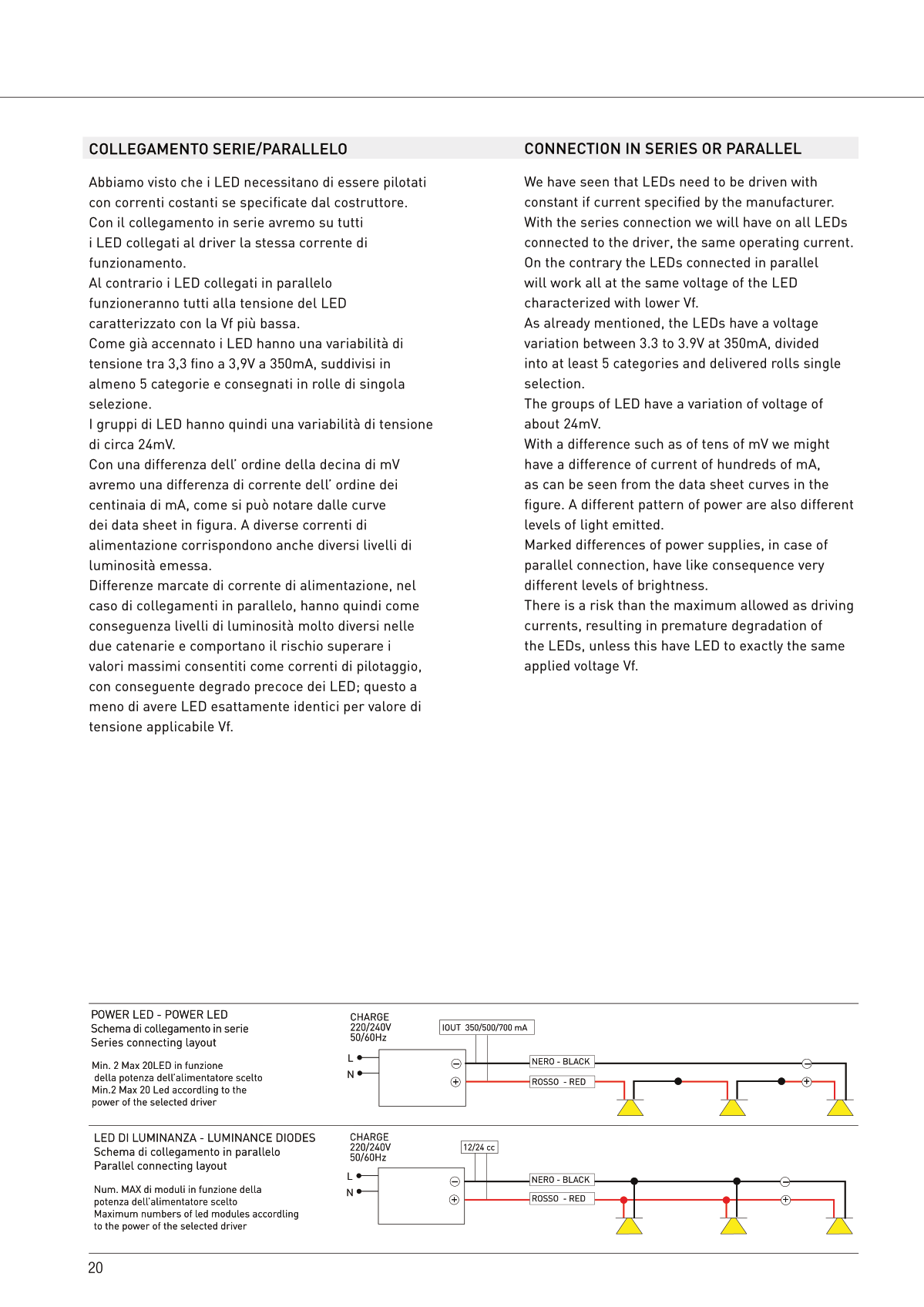CONNECTION IN SERIES OR PARALLEL
We have seen that LEDs need to be driven with
constant if current specified by the manufacturer.
With the series connection we will have on all LEDs
connected to the driver, the same operating current.
On the contrary the LEDs connected in parallel
will work all at the same voltage of the LED
characterized with lower Vf.
As already mentioned, the LEDs have a voltage
variation between 3.3 to 3.9V at 350mA, divided
into at least 5 categories and delivered rolls single
selection.
The groups of LED have a variation of voltage of
about 24mV.
With a difference such as of tens of mV we might
have a difference of current of hundreds of mA,
as can be seen from the data sheet curves in the
figure. A different pattern of power are also different
levels of light emitted.
Marked differences of power supplies, in case of
parallel connection, have like consequence very
different levels of brightness.
There is a risk than the maximum allowed as driving
currents, resulting in premature degradation of
the LEDs, unless this have LED to exactly the same
applied voltage Vf.
COLLEGAMENTO SERIE/PARALLELO
Abbiamo visto che i LED necessitano di essere pilotati
con correnti costanti se specificate dal costruttore.
Con il collegamento in serie avremo su tutti
i LED collegati al driver la stessa corrente di
funzionamento.
Al contrario i LED collegati in parallelo
funzioneranno tutti alla tensione del LED
caratterizzato con la Vf più bassa.
Come già accennato i LED hanno una variabilità di
tensione tra 3,3 fino a 3,9V a 350mA, suddivisi in
almeno 5 categorie e consegnati in rolle di singola
selezione.
I gruppi di LED hanno quindi una variabilità di tensione
di circa 24mV.
Con una differenza dell’ ordine della decina di mV
avremo una differenza di corrente dell’ ordine dei
centinaia di mA, come si può notare dalle curve
dei data sheet in figura. A diverse correnti di
alimentazione corrispondono anche diversi livelli di
luminosità emessa.
Differenze marcate di corrente di alimentazione, nel
caso di collegamenti in parallelo, hanno quindi come
conseguenza livelli di luminosità molto diversi nelle
due catenarie e comportano il rischio superare i
valori massimi consentiti come correnti di pilotaggio,
con conseguente degrado precoce dei LED; questo a
meno di avere LED esattamente identici per valore di
tensione applicabile Vf.
XXX-XXX Quarta parte.indd 397
19/11/13 11:34
20


